Description/achievement of initiative
This initiative builds local capacity to improve energy efficiency and reduce the emissions of a range of pollutants, supporting climate change mitigation and air quality improvement efforts in the transport sector on a sustainable basis. Policy, technology and finance-based interventions, maximise co-benefits for people, the environment and local economy. It ‘s designed for scale-up and replication regionally and internationally. Advanced Monitoring, Reporting and Verification solutions and innovative low and zero carbon emission-reduction technologies used, alongside pioneering financing solutions (green bond finance) and business models. It's integrated with Ghana’s climate change ambitions, low-carbon development pathway, sustainable development goals..
Implementation methodologies
The program is divided into three phases: 1. Setting road transport emission baselines and recommending emissions standards based on real-world driving data. Demonstrating the feasibility of innovative low/zero emission-abatement and energy efficiency technologies;
2. Designing effective, efficient and equitable policy, technology and financing mechanisms to reduce transport emissions for market enablement, in consultation with stakeholders;
3. Promoting the implementation of the selected toolbox of measures and technologies, and providing access to private finance to scale-up projects maximizing the co-benefits of climate change mitigation and air quality improvement.
The Program will encourage linkages with climate and green financing initiatives and carbon markets to underpin private funding. Critically it will act as a scalable template, with potential for replication across the African continent and other regions.
Sustainability Business Model: Monetisation is through both:
MRV policy integration, standards development and revenue generating compliance schemes
Energy efficiency performance and recognition and valuation of economic, social and environmental co-benefits
Providing the commercial underpinning to attract private finance – Green Bond debt finance.
By having the ability to build a local fleet emissions inventory, set real-world local standards, identify the high polluters and quantify emission reduction impacts – the emissions problem and associated pollution through access to and deployment of emission reduction / energy efficiency technologies can be tackled at source.
Arrangements for Capacity-Building and Technology Transfer
At its core, the Ghana Eco-Transport Program aims to build local capacity and transfer innovative technologies to robustly reduce transport emissions. Some of the key actions to promote these objectives are:
• Conducting a series of workshops to build stakeholder capacity on best-practice emission-abatement options.
• Facilitating the transfer of innovative emission-reduction emission monitoring and mitigation technologies through demonstration and validation, suitable for local conditions and needs – aligning with local policy;
• Evaluating and enabling local production and assembly, where feasible, of these technologies (technology transfer, with associated economic benefits;
• Establishing training courses to create technical capacity for local workforce engaged in activities undertaken under the project;
• Work with local stakeholders to attract private finance to support full implementation
• Organising outreach and public information activities throughout the project, to ensure ongoing public engagement and transparency and cultivate wider ongoing support re environmental underpinning of the project.
Through working with local partner organisation: IGES Ghana, alongside key public and private stakeholders as identified, aligned policy and standards set by MESTI, EPA and GSA.
Coordination mechanisms/governance structure
The initiative is led by Impact Global Emission Solutions Ltd. (IGES) and supported by the Government of Ghana, the UNFCCC and a range of international NGOs. IGES Ghana manages the program and the Designated National Authority for Carbon Reduction Projects at the Ministry of Environment, Science, Technology and Innovation (MESTI) acts as governmental coordinator. The Ministry of Transport, the EPA, the GSA and Ministry of Finance and Economic Planning are also important stakeholders in implementation. The program is endorsed by the UNFCCC head office and Regional office in Lomé, who coordinate collaboration with a range of international NGOs.
The highest governance standards will be in place as the full implementation and roll out of this programme will be financed through Green Bonds issued in accordance with and adhering to Climate Bonds Standards Initiative, and other market mechanisms integrating Blockchain as data verification platform.
Partner(s)
Impact Global Emission Solutions Ltd. (IGES), IGES Ghana Ltd, UNFCCC Head Office and Regional Collaboration Centre Lomé, Ghana National Ministry of Environment, Science, Technology and Innovation (MESTI) , Ghana national Ministry of Transport, Ministry of Finance and Economic Planning, Environmental Protection Agency (EPA), Ghana Standards Authority (GSA), Ghana Road Transport Coordinating Council, Metro Mass Busses.
Progress reports
Goal 1
1.3 - Implement nationally appropriate social protection systems and measures for all, including floors, and by 2030 achieve substantial coverage of the poor and the vulnerable
1.4 - By 2030, ensure that all men and women, in particular the poor and the vulnerable, have equal rights to economic resources, as well as access to basic services, ownership and control over land and other forms of property, inheritance, natural resources, appropriate new technology and financial services, including microfinance
1.5 - By 2030, build the resilience of the poor and those in vulnerable situations and reduce their exposure and vulnerability to climate-related extreme events and other economic, social and environmental shocks and disasters
1.a - Ensure significant mobilization of resources from a variety of sources, including through enhanced development cooperation, in order to provide adequate and predictable means for developing countries, in particular least developed countries, to implement programmes and policies to end poverty in all its dimensions
1.b - Create sound policy frameworks at the national, regional and international levels, based on pro-poor and gender-sensitive development strategies, to support accelerated investment in poverty eradication actions
Goal 2
2.a - Increase investment, including through enhanced international cooperation, in rural infrastructure, agricultural research and extension services, technology development and plant and livestock gene banks in order to enhance agricultural productive capacity in developing countries, in particular least developed countries
Goal 3
3.6 - By 2020, halve the number of global deaths and injuries from road traffic accidents
3.9 - By 2030, substantially reduce the number of deaths and illnesses from hazardous chemicals and air, water and soil pollution and contamination
Goal 7
7.1 - By 2030, ensure universal access to affordable, reliable and modern energy services
7.2 - By 2030, increase substantially the share of renewable energy in the global energy mix
7.3 - By 2030, double the global rate of improvement in energy efficiency
7.a - By 2030, enhance international cooperation to facilitate access to clean energy research and technology, including renewable energy, energy efficiency and advanced and cleaner fossil-fuel technology, and promote investment in energy infrastructure and clean energy technology
7.b - By 2030, expand infrastructure and upgrade technology for supplying modern and sustainable energy services for all in developing countries, in particular least developed countries, small island developing States, and land-locked developing countries, in accordance with their respective programmes of support
Goal 8
8.1 - Sustain per capita economic growth in accordance with national circumstances and, in particular, at least 7 per cent gross domestic product growth per annum in the least developed countries
8.2 - Achieve higher levels of economic productivity through diversification, technological upgrading and innovation, including through a focus on high-value added and labour-intensive sectors
8.3 - Promote development-oriented policies that support productive activities, decent job creation, entrepreneurship, creativity and innovation, and encourage the formalization and growth of micro-, small- and medium-sized enterprises, including through access to financial services
8.4 - Improve progressively, through 2030, global resource efficiency in consumption and production and endeavour to decouple economic growth from environmental degradation, in accordance with the 10-year framework of programmes on sustainable consumption and production, with developed countries taking the lead
8.10 - Strengthen the capacity of domestic financial institutions to encourage and expand access to banking, insurance and financial services for all
Goal 9
9.3 - Increase the access of small-scale industrial and other enterprises, in particular in developing countries, to financial services, including affordable credit, and their integration into value chains and markets
9.4 - By 2030, upgrade infrastructure and retrofit industries to make them sustainable, with increased resource-use efficiency and greater adoption of clean and environmentally sound technologies and industrial processes, with all countries taking action in accordance with their respective capabilities
9.5 - Enhance scientific research, upgrade the technological capabilities of industrial sectors in all countries, in particular developing countries, including, by 2030, encouraging innovation and substantially increasing the number of research and development workers per 1 million people and public and private research and development spending
9.a - Facilitate sustainable and resilient infrastructure development in developing countries through enhanced financial, technological and technical support to African countries, least developed countries, landlocked developing countries and small island developing States
9.b - Support domestic technology development, research and innovation in developing countries, including by ensuring a conducive policy environment for, inter alia, industrial diversification and value addition to commodities
Goal 10
10.4 - Adopt policies, especially fiscal, wage and social protection policies, and progressively achieve greater equality
10.b - Encourage official development assistance and financial flows, including foreign direct investment, to States where the need is greatest, in particular least developed countries, African countries, small island developing States and landlocked developing countries, in accordance with their national plans and programmes
Goal 11
11.2 - By 2030, provide access to safe, affordable, accessible and sustainable transport systems for all, improving road safety, notably by expanding public transport, with special attention to the needs of those in vulnerable situations, women, children, persons with disabilities and older persons
11.3 - By 2030, enhance inclusive and sustainable urbanization and capacity for participatory, integrated and sustainable human settlement planning and management in all countries
11.6 - By 2030, reduce the adverse per capita environmental impact of cities, including by paying special attention to air quality and municipal and other waste management
11.b - By 2020, substantially increase the number of cities and human settlements adopting and implementing integrated policies and plans towards inclusion, resource efficiency, mitigation and adaptation to climate change, resilience to disasters, and develop and implement, in line with the Sendai Framework for Disaster Risk Reduction 2015-2030, holistic disaster risk management at all levels
Goal 12
12.6 - Encourage companies, especially large and transnational companies, to adopt sustainable practices and to integrate sustainability information into their reporting cycle
12.7 - Promote public procurement practices that are sustainable, in accordance with national policies and priorities
12.a - Support developing countries to strengthen their scientific and technological capacity to move towards more sustainable patterns of consumption and production
12.c - Rationalize inefficient fossil-fuel subsidies that encourage wasteful consumption by removing market distortions, in accordance with national circumstances, including by restructuring taxation and phasing out those harmful subsidies, where they exist, to reflect their environmental impacts, taking fully into account the specific needs and conditions of developing countries and minimizing the possible adverse impacts on their development in a manner that protects the poor and the affected communities
Goal 13
13.1 - Strengthen resilience and adaptive capacity to climate-related hazards and natural disasters in all countries
13.2 - Integrate climate change measures into national policies, strategies and planning
13.3 - Improve education, awareness-raising and human and institutional capacity on climate change mitigation, adaptation, impact reduction and early warning
13.a - Implement the commitment undertaken by developed-country parties to the United Nations Framework Convention on Climate Change to a goal of mobilizing jointly $100 billion annually by 2020 from all sources to address the needs of developing countries in the context of meaningful mitigation actions and transparency on implementation and fully operationalize the Green Climate Fund through its capitalization as soon as possible
13.b - Promote mechanisms for raising capacity for effective climate change-related planning and management in least developed countries and small island developing States, including focusing on women, youth and local and marginalized communities
* Acknowledging that the United Nations Framework Convention on Climate Change is the primary international,
intergovernmental forum for negotiating the global response to climate change.
Goal 14
14.1 - By 2025, prevent and significantly reduce marine pollution of all kinds, in particular from land-based activities, including marine debris and nutrient pollution
14.3 - Minimize and address the impacts of ocean acidification, including through enhanced scientific cooperation at all levels
14.a - Increase scientific knowledge, develop research capacity and transfer marine technology, taking into account the Intergovernmental Oceanographic Commission Criteria and Guidelines on the Transfer of Marine Technology, in order to improve ocean health and to enhance the contribution of marine biodiversity to the development of developing countries, in particular small island developing States and least developed countries
14.c - Enhance the conservation and sustainable use of oceans and their resources by implementing international law as reflected in UNCLOS, which provides the legal framework for the conservation and sustainable use of oceans and their resources, as recalled in paragraph 158 of The Future We Want
Goal 15
15.5 - Take urgent and significant action to reduce the degradation of natural habitats, halt the loss of biodiversity and, by 2020, protect and prevent the extinction of threatened species
15.a - Mobilize and significantly increase financial resources from all sources to conserve and sustainably use biodiversity and ecosystems
Goal 16
16.6 - Develop effective, accountable and transparent institutions at all levels
16.7 - Ensure responsive, inclusive, participatory and representative decision-making at all levels
16.8 - Broaden and strengthen the participation of developing countries in the institutions of global governance
16.b - Promote and enforce non-discriminatory laws and policies for sustainable development
Goal 17
17.1 - Strengthen domestic resource mobilization, including through international support to developing countries, to improve domestic capacity for tax and other revenue collection
17.3 - Mobilize additional financial resources for developing countries from multiple sources
17.4 - Assist developing countries in attaining long-term debt sustainability through coordinated policies aimed at fostering debt financing, debt relief and debt restructuring, as appropriate, and address the external debt of highly indebted poor countries to reduce debt distress
17.5 - Adopt and implement investment promotion regimes for least developed countries
17.6 - Enhance North-South, South-South and triangular regional and international cooperation on and access to science, technology and innovation and enhance knowledge sharing on mutually agreed terms, including through improved coordination among existing mechanisms, in particular at the United Nations level, and through a global technology facilitation mechanism
17.7 - Promote the development, transfer, dissemination and diffusion of environmentally sound technologies to developing countries on favourable terms, including on concessional and preferential terms, as mutually agreed
17.13 - Enhance global macroeconomic stability, including through policy coordination and policy coherence
17.14 - Enhance policy coherence for sustainable development
17.15 - Respect each country’s policy space and leadership to establish and implement policies for poverty eradication and sustainable development
Multi-stakeholder partnerships
17.16 - Enhance the global partnership for sustainable development, complemented by multi-stakeholder partnerships that mobilize and share knowledge, expertise, technology and financial resources, to support the achievement of the sustainable development goals in all countries, in particular developing countries
17.17 - Encourage and promote effective public, public-private and civil society partnerships, building on the experience and resourcing strategies of partnerships
Data, monitoring and accountability
17.18 - By 2020, enhance capacity-building support to developing countries, including for least developed countries and small island developing States, to increase significantly the availability of high-quality, timely and reliable data disaggregated by income, gender, age, race, ethnicity, migratory status, disability, geographic location and other characteristics relevant in national contexts
17.19 - By 2030, build on existing initiatives to develop measurements of progress on sustainable development that complement gross domestic product, and support statistical capacity-building in developing countries


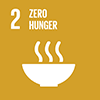
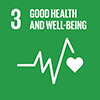

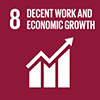
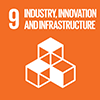
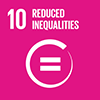
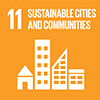
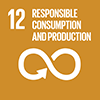
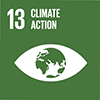
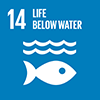
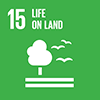
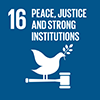
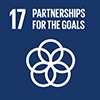
 12/18
12/18
 3/18
3/18
 6/18
6/18
 9/18
9/18
 Time-frame: 05/14 - 12/18
Time-frame: 05/14 - 12/18